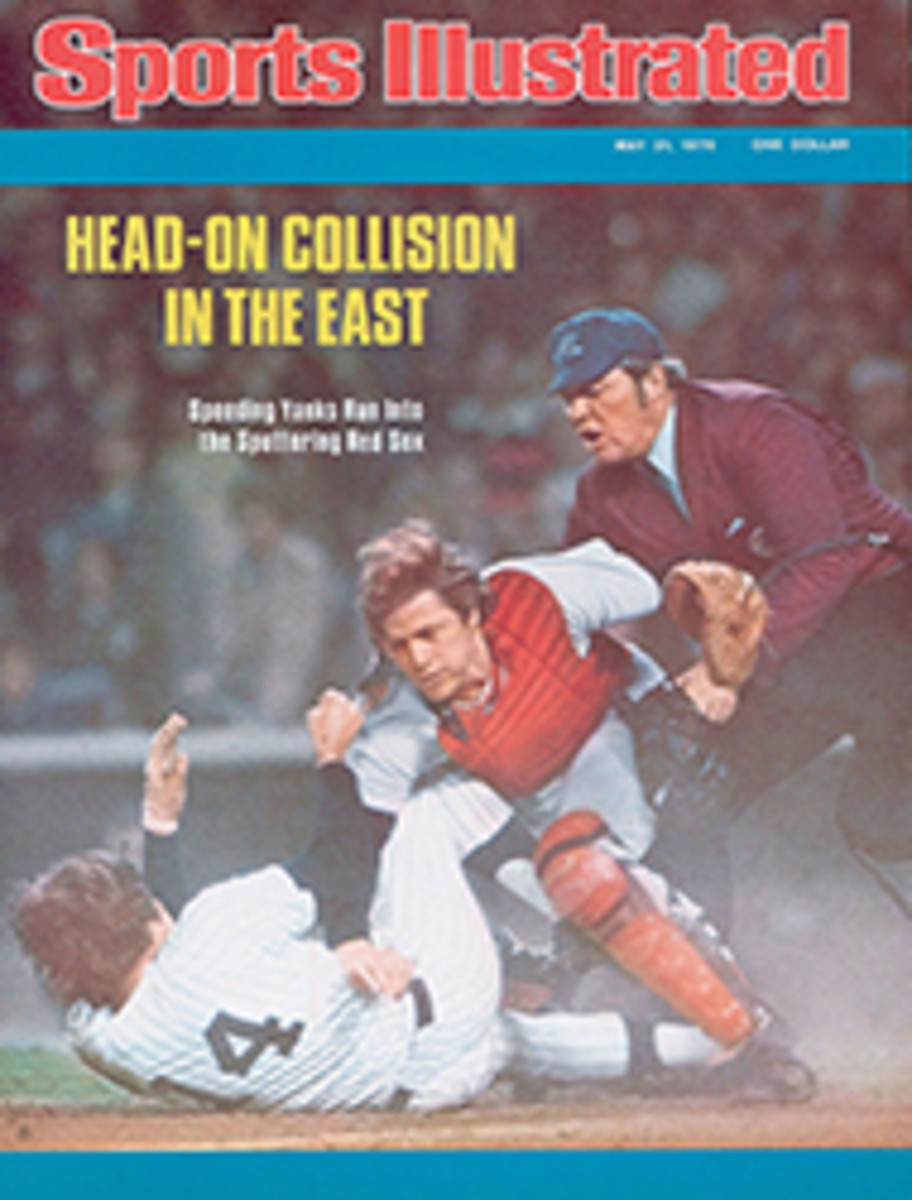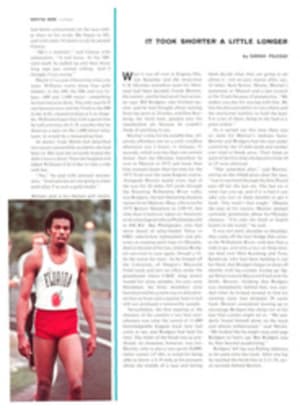
A gentler style for a gentleman
One day last fall Phillies Righthander Jim Lonborg called his wife Rosie and asked her how she would feel if he bought a lumberyard. Lonborg believed that the building industry might improve, and he knew all indications were that his pitching shoulder would not. He was convinced his baseball career was over. As it turns out, the building industry is still way down, but Lonborg's career is way up. His shoulder has recovered so completely that, far from being washed up, Lonborg has become the most effective starter in the National League. With a 5-3 victory over the Mets last week, he ran his record to 6-0. And it is not only that unblemished record that is making Lonborg exultant. When he wakes up the morning after pitching a game, he cannot believe how good he feels, how free from pain and stiffness his right shoulder is.
Painlessness has been a rare sensation for Lonborg the last eight years. He has been injury-prone ever since December 1967, when he tore the ligaments in his left knee in a skiing accident. That mishap almost ended his career after two losing years with the Red Sox and a brilliant 1967 season in which Boston won the pennant and the 25-year-old Lonborg had a 22-9 record and earned the Cy Young Award.
At that time he was known for his fastball and his elegant manner off the field. Gentleman Jim, the press called him, and it was constantly pointed out that he dressed well, went to the symphony and was a Stanford graduate who had planned to become a doctor. Unassuming and debonair, Lonborg was a sought-after bachelor who could not decide what was more important in baseball, winning lots of games or making lots of money.
He is 34 now, and still very much Gentleman Jim. But his elegance has been tempered, and his pitching has become more subtle. His emphasis now is not on speed, but on location. In the four years after his skiing accident, Lonborg had a 27-29 record for the Red Sox and was twice sent to the minors. In 1972, Boston traded him to Milwaukee, where the pitching coach was Wes Stock. Lonborg credits Stock with helping him develop his current style, which relies heavily on pinpointing the ball down and away and changing speeds.
Still, when Lonborg was sent to the Phillies at the end of 1972, he had yet to gain full mastery of his breaking ball. To the rescue came Philadelphia Pitching Coach Ray Rippelmeyer, who recommended a small adjustment—that Lonborg bring his hand a little closer to his head as he made his deliveries. Lonborg's curve showed immediate and dramatic improvement, and his slider, by his own estimate, became twice as effective. In fact, Lonborg links his resurgence directly to that pitch. He feels that he could throw nothing but sliders to right-handed batters for an entire game and probably win.
Gentleman Jim's bachelor days ended in 1970 when he married Rosemary Feeney. The changes in his life-style have not been as dramatic as the modification in his pitching style; despite his reputation when he was with the Red Sox, Lonborg had never been a man of extremes. He has cut out concerts and no longer takes two-week hunting trips. Now his idea of a really fine time is staying at home with Rosie and his 19-month-old adopted daughter Phoebe. In 1974 he took up Transcendental Meditation and kept at it regularly for a year and a half. Then he began to resent the daily loss of 40 minutes—20 in the morning, 20 in the evening—of family time that TM requires. Now he only meditates on pitching days.
By last year Lonborg's comeback seemed complete. Early in the season he was 6-3, and he predicted that he would win 20 games. Then came his shoulder injury. He finished with an 8-6 record and a 4.13 ERA.
Lonborg always had a tendency to pitch across his body—much like a golfer who swings with a closed stance—which put considerable strain on his lower back, but not much stress on his right shoulder. Because of muscle spasms in his back, he decided last summer to open up his pitching motion about six inches by increasing the rotation of his hips as he threw. But it is virtually impossible to open up one's hips without also opening up one's shoulders, and Lonborg's shoulder muscles were not able to withstand the added twisting that his new delivery required. He kept pitching, became increasingly ineffective and felt more pain with each appearance.
Shoulders, like knees, are complicated joints, and injuries to them are difficult to diagnose. Finally, last August, Lonborg went to Dr. James Parkes, the Mets' physician and a shoulder expert. His diagnosis was a strained rotator cuff, an injury from which few pitchers ever recover. The rotator cuff consists of two sets of muscles, one of which is supposed to stop the arm when it reaches the limit of its range of movement. In activities like pitching that involve a whipping motion, a strong rotator cuff is vital for stopping the arm. Lonborg's was not strong enough, and it became damaged.
The therapy for the injury consists first of rest, then of stretching exercises. Lonborg relaxed for six weeks at the end of last season before going to Florida to work for three weeks in warm weather. It was during the first week that he called Rosie about the lumberyard. By the second week he had forgotten about looking for another career and by the third he was "more than elated." He went home and rested for a couple of weeks more, thinking everything was going to be fine.
While playing tennis in late November, Lonborg began feeling pain in his shoulder when he served, a depressing turn of events because the same muscles are used in a tennis serve as in pitching. In December he went to a sports medicine specialist at Boston's Children's Hospital who found that while Lonborg had rested after his return from Florida, his muscles had atrophied. He began a new regimen of exercises to once again build up the shrunken muscles. It worked, and Lonborg now feels so strong that he figures he will be able to pitch for another four or five years. But he does not talk about winning 20 this season. For once, a player who claims he is taking it one game at a time has good reason to mean it.
At his present one-at-a-time rate, Lonborg could lead the Phillies to a division title. Before the season began, Philadelphia, which has enough good hitters to stock two pennant contenders, seemed too short on pitching to win a championship. But by the end of last week, the Phils had a three-game lead in the National League East, largely because of the work of Lonborg and another revitalized pitcher, Lefthander Steve Carlton (4-1).
Lonborg's victory over the Mets was typical of his new style. He struck out only two batters—but his sharp control kept him from walking any. He allowed nine hits, but seven of them were relatively harmless singles, just the type batters tend to get on low outside pitches they cannot pull. And best of all, when Lonborg woke up the next morning his arm still felt like a winner.
PHOTO

